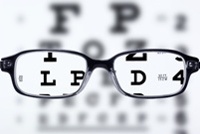By Geoff Mukhtar
Communications Manager at United Benefit Advisors
 Eighty-one percent of employees have elected vision benefits in 2016, up from 78 percent last year, according to Transitions. This increase moved vision into a tie with dental as the second most popular benefit election behind medical.
Eighty-one percent of employees have elected vision benefits in 2016, up from 78 percent last year, according to Transitions. This increase moved vision into a tie with dental as the second most popular benefit election behind medical.
Digital eye strain, which is detailed by a report from The Vision Council, could be a contributing factor to the trend. Some of the Council’s findings include:
- 65 percent of Americans report experiencing symptoms of digital eye strain, including 70 percent of women.
- Nearly 90 percent of Americans use digital devices for two or more hours daily and nearly 60 percent do so for five or more daily.
- 77 percent of those who suffer from digital eye strain use two or more devices simultaneously, with women more likely to do so than men. In comparison, only 53 percent of those who use only one device at a time suffer from digital eye strain.
The symptoms of digital eye strain include neck/back/shoulder pain, headache, blurred version and dry eyes. In addition to the health concerns they bring, these symptoms can also negatively impact employee productivity.
An article in Employee Benefit News by Dr. Linda Chous, UnitedHealthcare’s chief eye care officer, titled “Digital Eye Strain Among Workers Causing Employers to Rethink Vision Benefits,” has several prevention tips for reducing digital eye strain in your employees:
- Employees should keep computer screens about 30 inches away from their eyes.
- Employees should rest their eyes every 15 minutes.
- Employees should blink frequently, which reduces dry eye and helps maintain eye health.
Chous also advocates for regular eye exams, for reasons beyond digital eye strain. She writes, “The eyes are also a window to overall health. Regular eye exams play an important role in identifying and managing serious, chronic conditions, including diabetes, high cholesterol, hypertension, multiple sclerosis and some tumors.”
She goes on to note how some employers are now “embracing an integrated approach to vision and medical benefits that support patients and health care professionals with information, decisions and outcomes.” These programs have a variety of features, such as:
- Eye care practitioners can be encouraged to code claims with chronic condition categories, and patients with those diagnoses can be automatically referred to disease management programs.
- Eye care practitioners can be notified of patients with at-risk conditions during the exam authorization process.
- Patients with certain conditions (such as diabetes and hypertension) can be notified with a phone call about the importance of their annual eye exam.
- For patients who may have chronic conditions, eye care practitioners can use specially designed online forms to refer them to primary care providers or specialists.
As an employer, you have the ability to help protect your employees’ eye health–which, in turn, influences their overall health and productivity. And, with adults under 30 experiencing the highest rates of digital eye strain (73 percent) of all age groups, taking actions and providing benefits that protect employees’ eye health is likely to become even more important.
